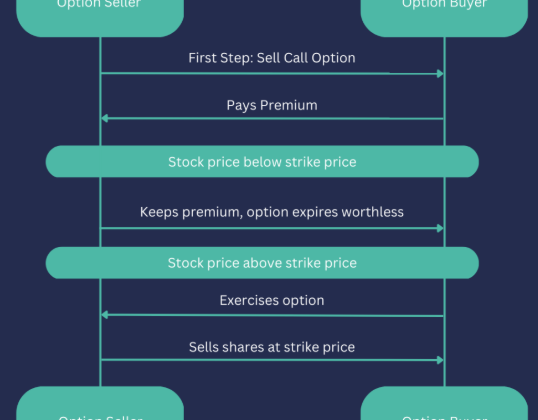
In recent years, the UK government has revamped its research and development (R&D) tax credit system, creating a unified regime for all companies. This new scheme, set to take effect from April 1, 2024, aims to simplify the process for businesses of all sizes, replacing the separate schemes for small and medium-sized enterprises (SMEs) and larger corporations. Here’s a look at the key features of the new system, its implications for businesses, and how it affects companies engaged in R&D activities.
Key Features of the Merged R&D Scheme
The merged R&D tax credit system brings several important changes:
- Uniform Credit Rate: All businesses, whether small or large, will benefit from a 20% R&D credit rate, aligning with the existing RDEC system.
- Notional Tax Rate for Loss-Making Companies: Companies that are not profitable will see a reduced notional tax rate on R&D credits, dropping from 25% to 19%. This allows loss-making companies to receive a net benefit of 16.2%, while profit-making firms will enjoy a 15% benefit.
- Subsidized R&D Costs: Under the new regime, businesses whose R&D costs are subsidized (through grants or other external funding) will not face reductions in their R&D tax relief, as was the case with the previous SME regime.
- PAYE/NIC Cap: The new scheme adopts the PAYE/NIC cap (set at £20,000 plus three times the total PAYE/NIC) from the SME regime, which applies to businesses with employees in the UK.
- Subcontracting Rules: The new scheme changes how subcontracted R&D work is treated, allowing businesses that subcontract R&D to third parties to claim the related expenditure, under specific conditions.
How the Merged Scheme Works
The two previous R&D schemes for SMEs and large companies will now be merged into a single system. The key advantage of this unified approach is that it offers consistency across all business sizes, with a 20% credit rate that’s accessible to all businesses engaged in R&D. This new regime eliminates the restrictions on subsidized R&D costs, allowing businesses to retain the full value of their claims even if their R&D activities are externally funded. Additionally, the PAYE/NIC cap will limit the total R&D claims for businesses with employees in the UK, bringing clarity and consistency to how companies can access tax relief.
Subcontracted R&D Expenditure: Key Changes
The treatment of subcontracted R&D is one of the major shifts in the new scheme. Under the previous regime, the company subcontracting R&D work could not always claim the costs associated with subcontracted activities. However, with the new system, the company that subcontracts the work can now claim the expenses—provided the subcontractor is subject to UK corporation tax. If the subcontractor is an overseas entity, they may only claim the expenses if the company subcontracting the work is not subject to UK tax.
Moreover, the UK government has introduced stricter regulations regarding overseas contracting. As of April 2024, costs for overseas workers will only qualify for R&D relief under exceptional circumstances. These exceptions include situations where it is impossible to replicate the R&D work in the UK, such as specialized clinical trials that require facilities unavailable in the UK.
Changes for R&D-Intensive SMEs
The government has also made changes for SMEs that are heavily invested in R&D. For these companies, the threshold to be considered “R&D-intensive” will drop from 40% to 30% of total expenditure. This change, effective from April 1, 2024, opens the door for more SMEs to qualify for enhanced R&D tax benefits. Loss-making R&D-intensive SMEs will receive an enhanced deduction of 86% on qualifying R&D expenses, as well as a repayable tax credit at a rate of 14.5%. This will result in an effective rate of 26.97% for these companies, providing significant support for businesses that rely heavily on R&D to drive innovation.
Financial Impact on SMEs
While the new system offers more flexibility, it will also result in some financial adjustments for SMEs:
- Reduced R&D Relief: For most SMEs, the tax relief will decrease from 130% to 86%, and the cash R&D tax credit rate for loss-making companies will drop from 14.5% to 10%.
- Changes in Claiming Process: Starting in April 2023, companies that have not claimed R&D tax credits within the past three years will need to notify HMRC of their intention to file a claim within six months of the end of the relevant period. In addition, all R&D claims will need to be submitted digitally via a new online portal, requiring more detailed information about qualifying activities.
Special Support for R&D-Intensive Businesses
For businesses that qualify as R&D-intensive, the reduced threshold to 30% of overall expenditure will provide greater access to the old SME scheme benefits. This change is particularly beneficial for businesses with substantial R&D costs, as it allows them to continue to benefit from more generous tax credits under the current system. R&D-intensive companies will continue to receive the 14.5% cash credit for loss-making businesses, ensuring they remain supported as they invest in innovation.
Preparing for the Changes
The upcoming shift to a unified R&D tax credit system represents a significant change for businesses in the UK. Companies engaged in R&D activities must understand these updates to optimise their claims. Some of the key steps include:
- Reviewing Eligibility: Businesses should assess whether they meet the new criteria for R&D-intensive status and whether they qualify for the tax relief under the revised thresholds.
- Updating Internal Processes: Companies should prepare for the digital filing requirements and make sure their R&D activities align with the more stringent HMRC guidelines.
- Consulting with Experts: With these changes, working with financial advisors or tax specialists can help ensure that businesses fully capitalize on the new regime.
Conclusion
The shift towards a unified R&D tax credit scheme offers several advantages for businesses, particularly SMEs involved in research and development. While there are some financial reductions and administrative changes, the new system provides a more streamlined, consistent approach to accessing R&D tax relief. Understanding the key aspects of the merged scheme, especially the rules around subsidized R&D costs and subcontracted work, will help businesses navigate these changes effectively and continue to benefit from valuable tax incentives.
















